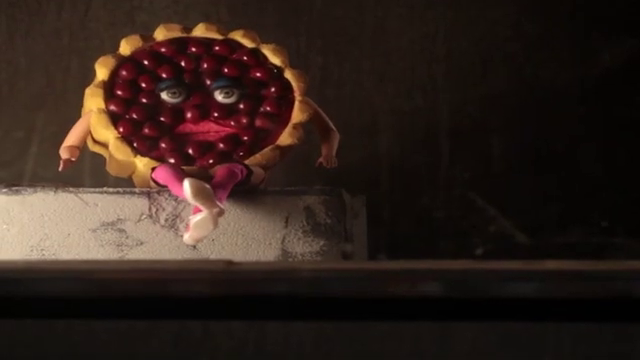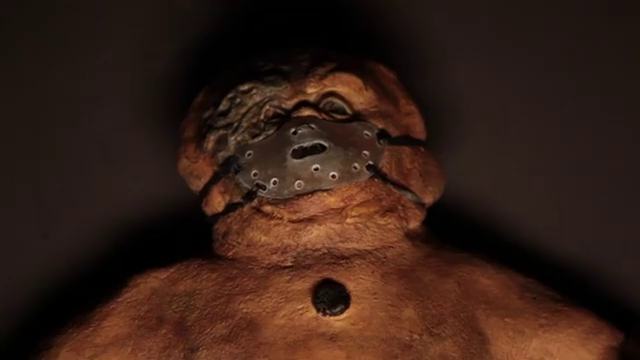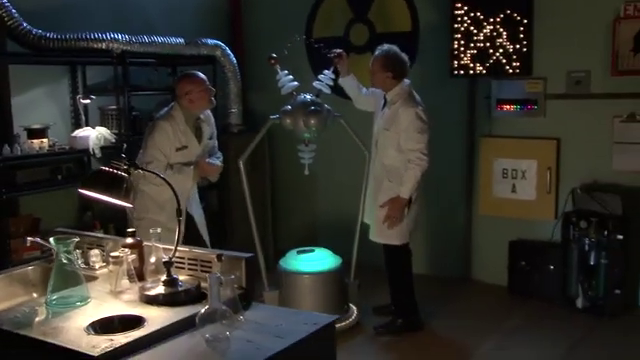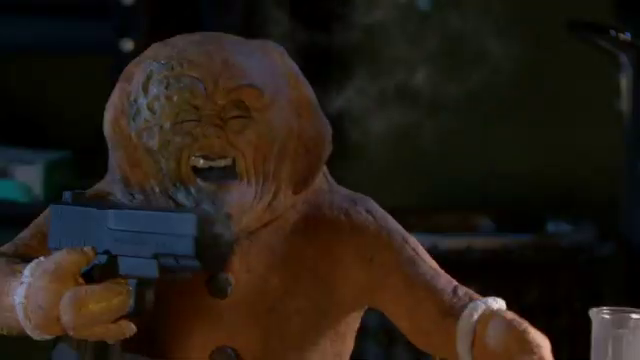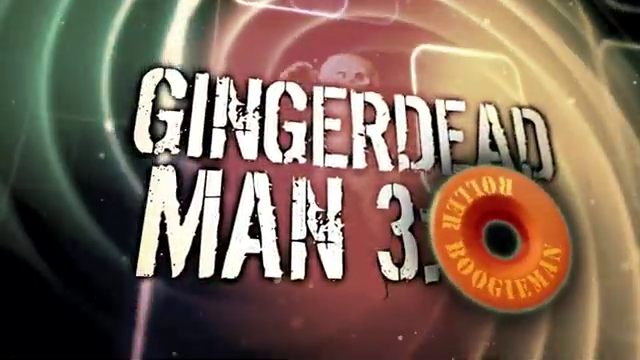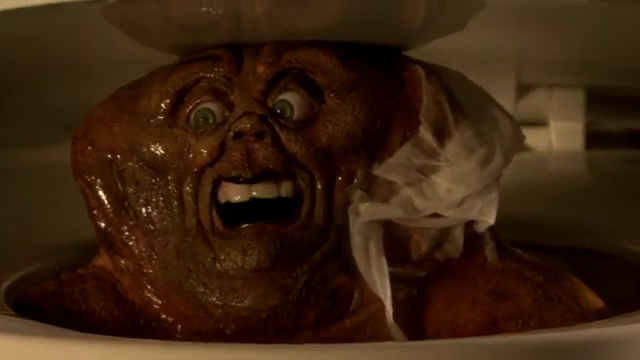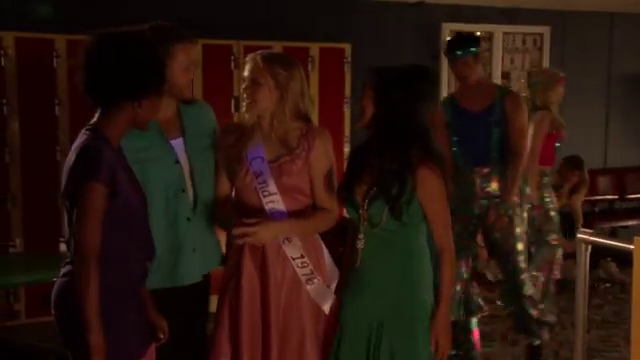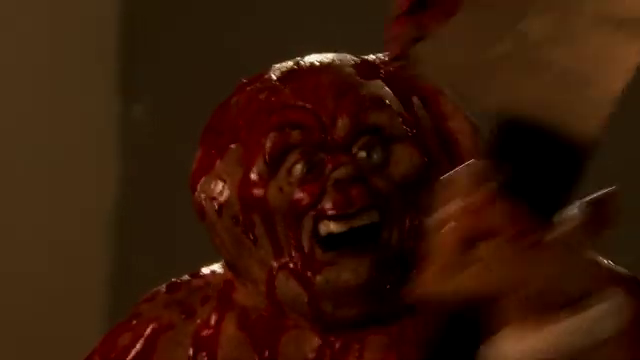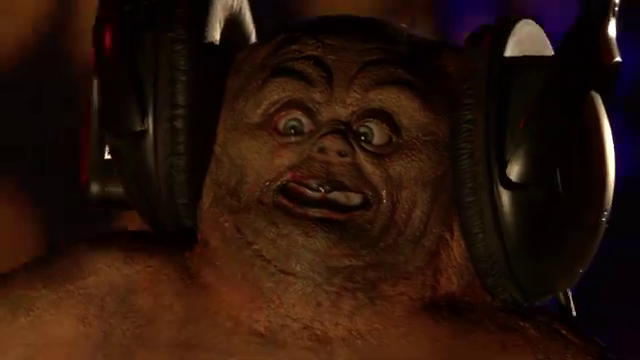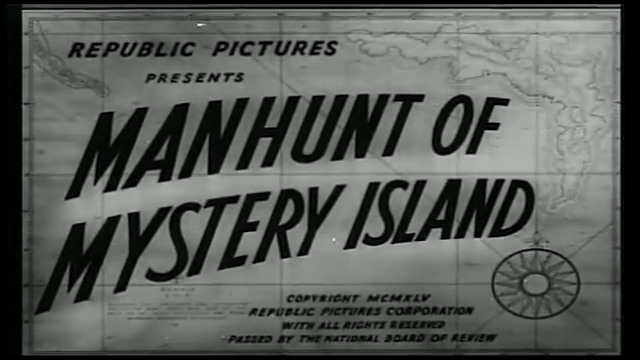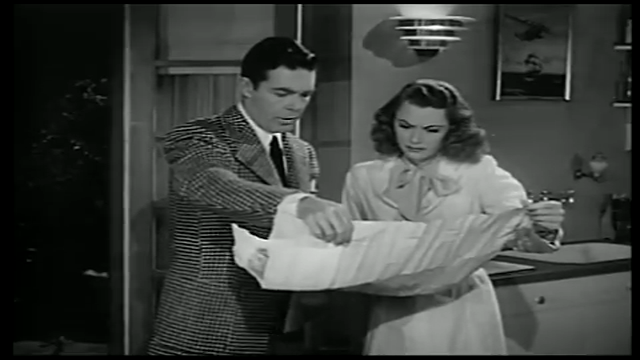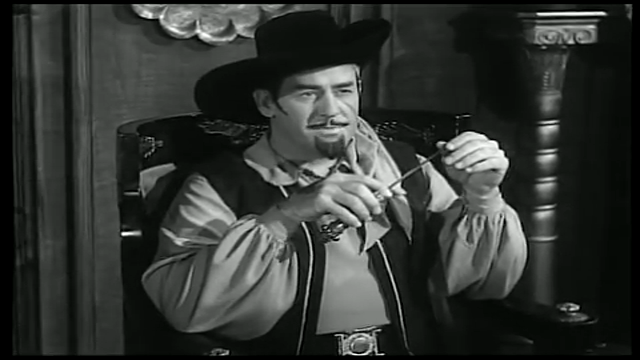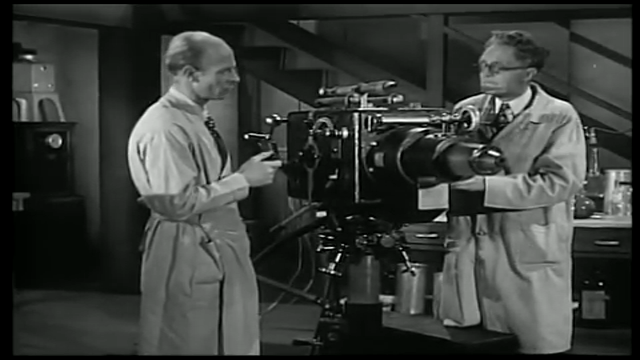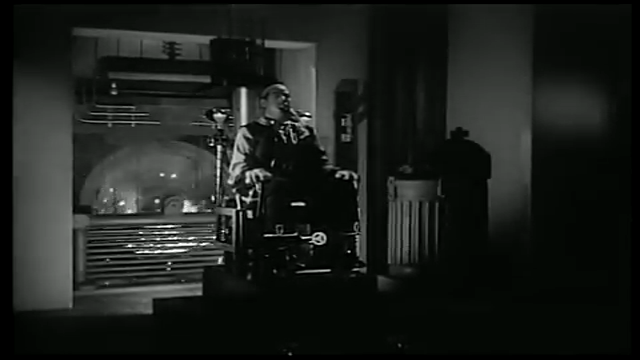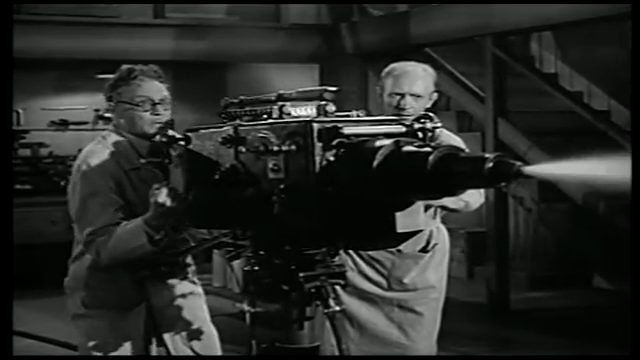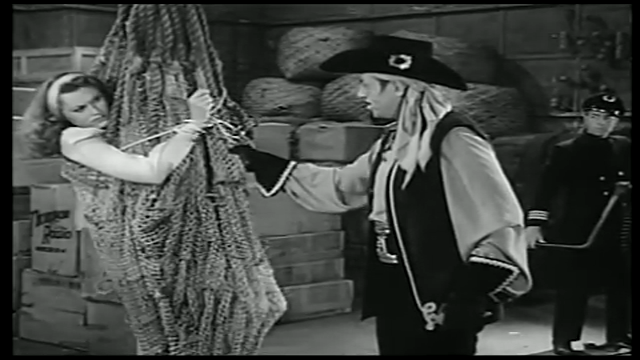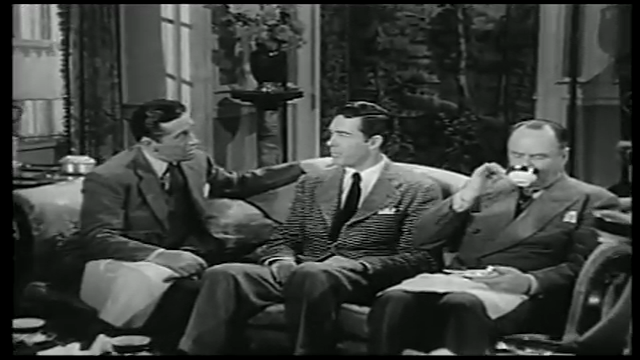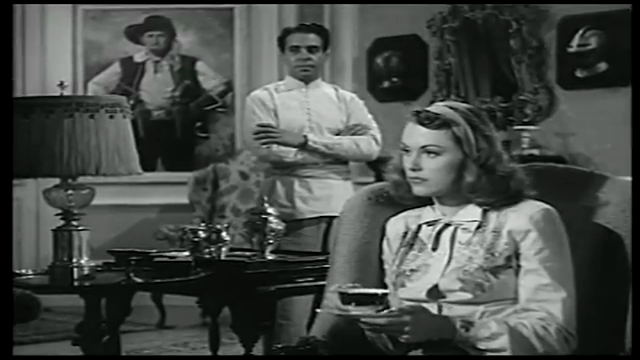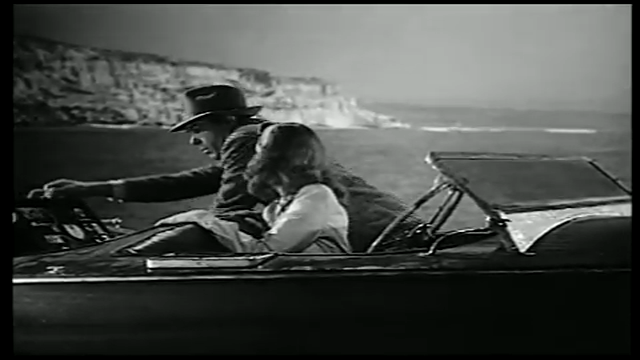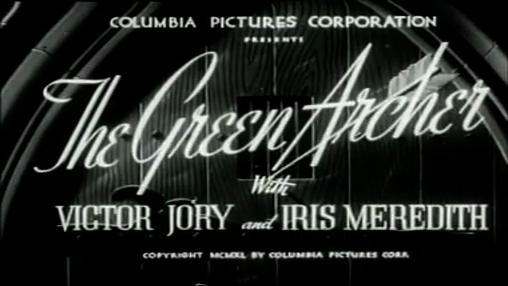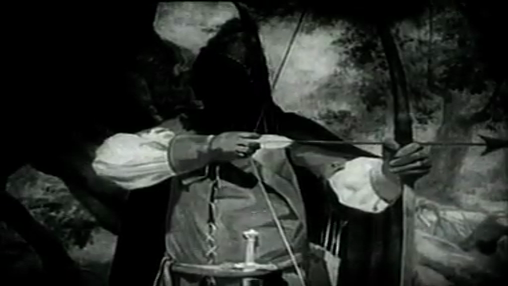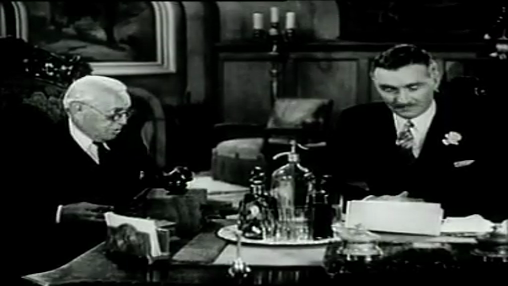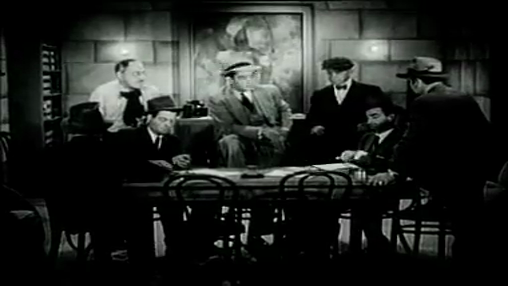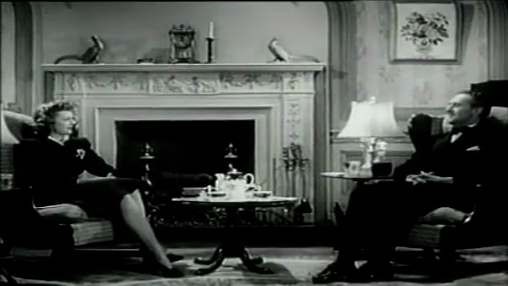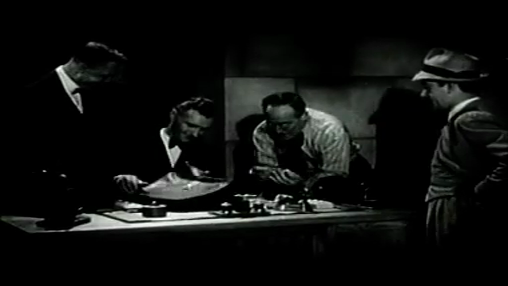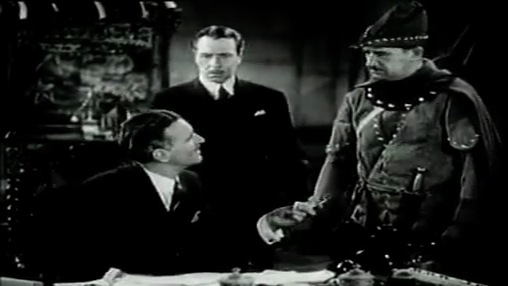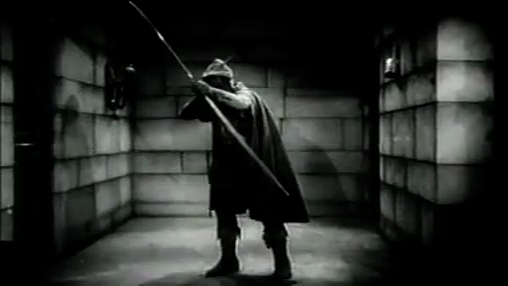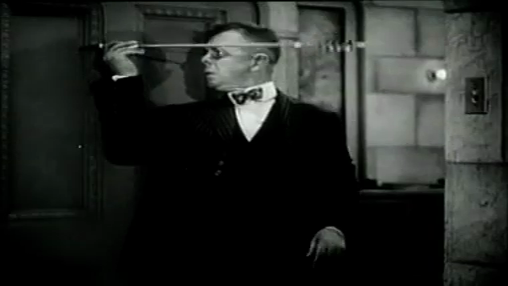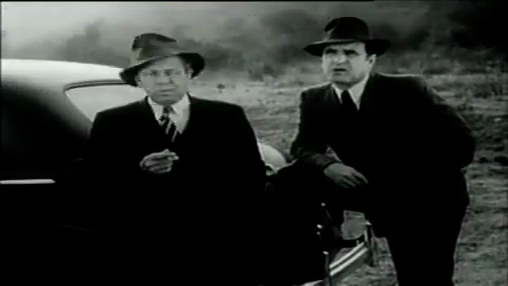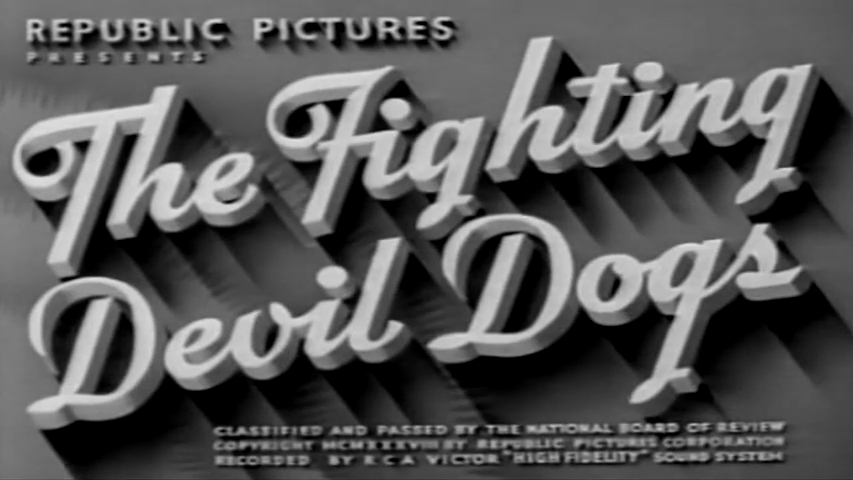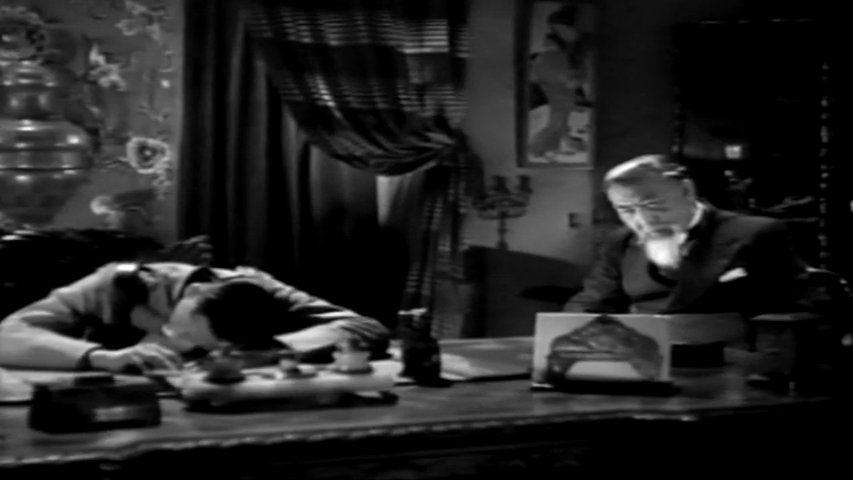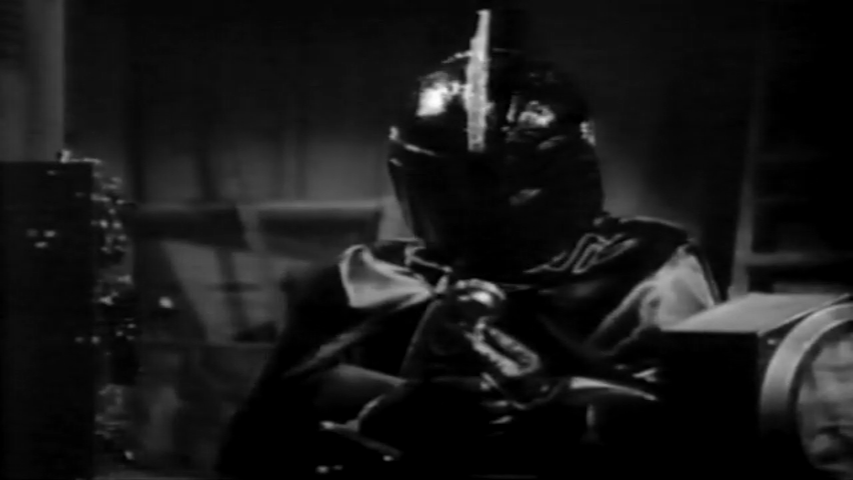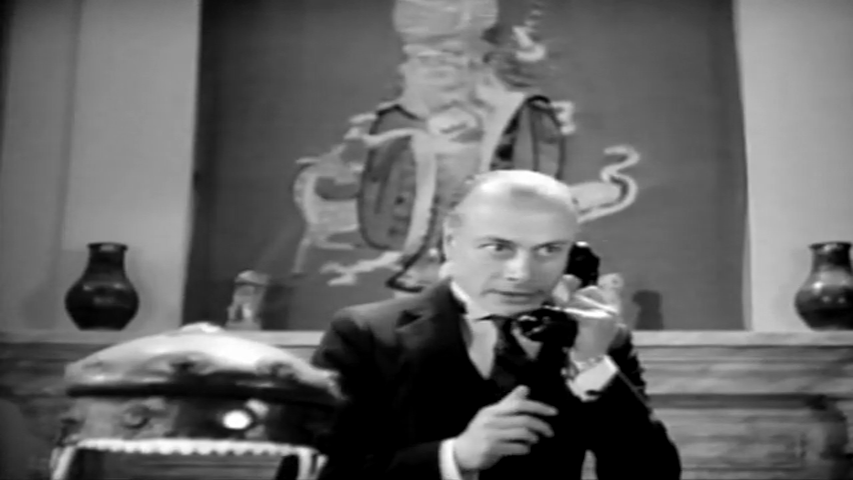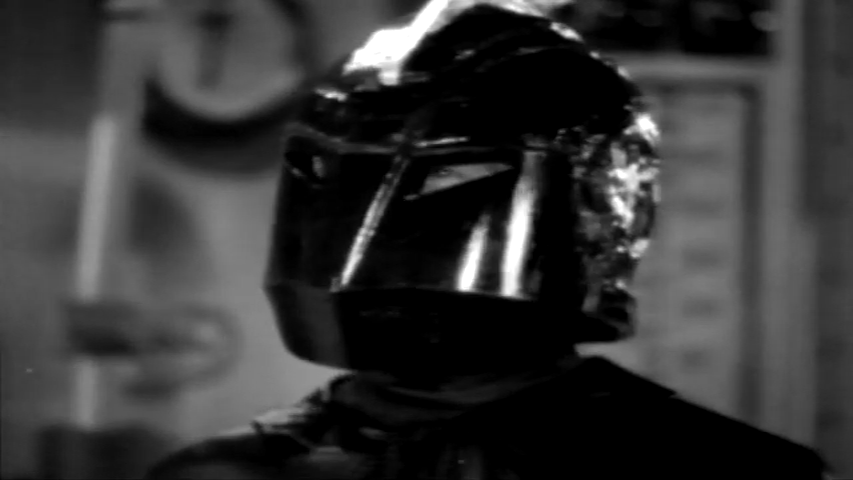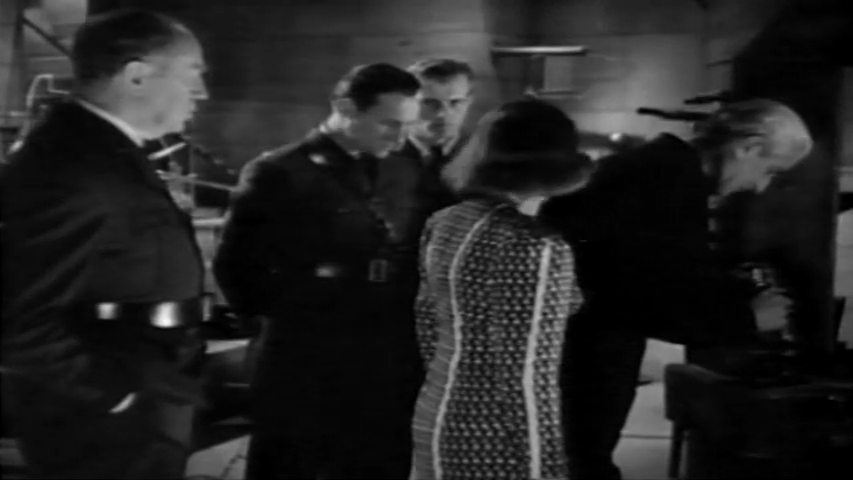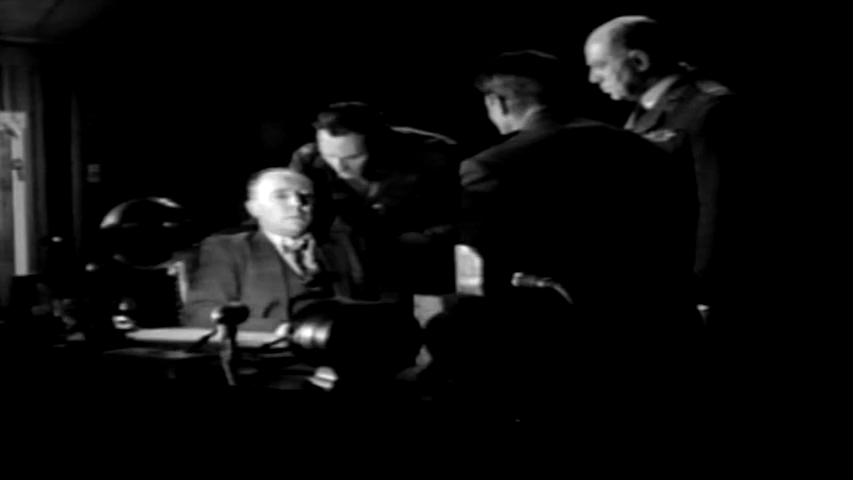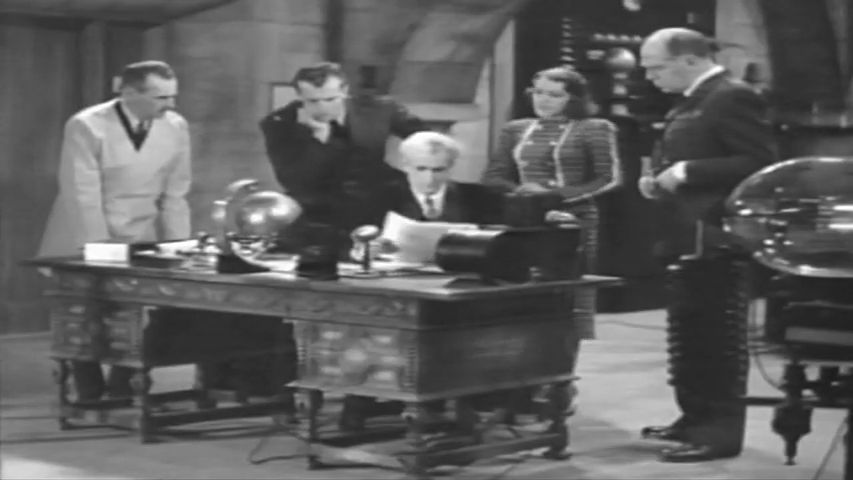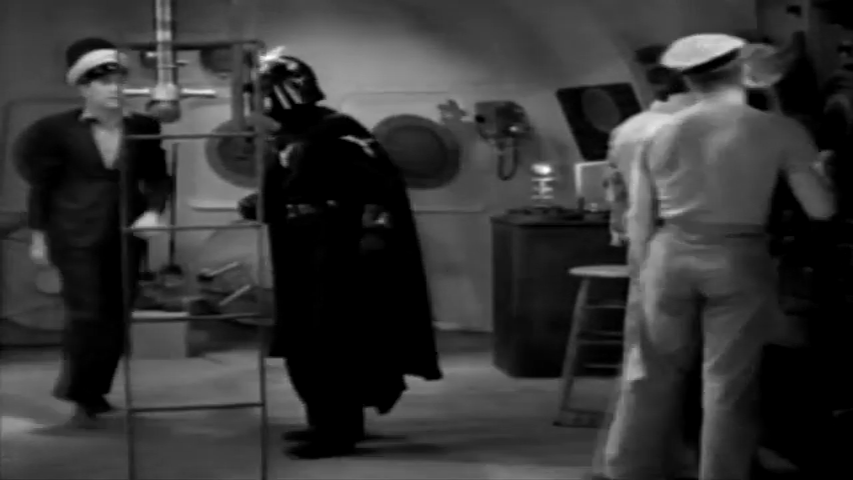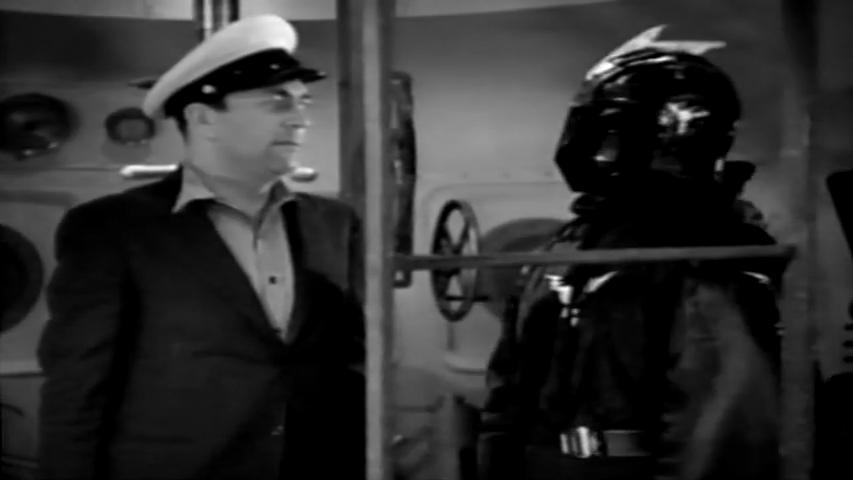-
#447 – Gingerdead Man 3: Saturday Night Cleaver
Gingerdead Man 3: Saturday Night Cleaver (2011)
Film review #447
Director: William Butler
SYNOPSIS: The Gingerdead Man has been locked up in an asylum, but he is inadvertently freed by animal rights activists, and steals a time travelling device, ending up in 1976. Winding up at a roller disco, the Gingerdead Man decides to engage in yet another killing spree, while the roller derby itself has it’s own problems in the form of imminent closure, the announcement of the roller derby queen, and the niece of the owner finding her love for roller disco to the horror of her aunt…
THOUGHTS/ANALYSIS: Gingerdead Man 3: Saturday Night Cleaver is a 2011 film and the sequel to Gingerdead Man 2: Passion of the Crust. The film starts off at the Scientific Institute for the Study of Homicidal Baked Goods, where FBI agent Clarissa Darling is visiting the Gingerdead Man, intending to secretly kill him for possessing the soul of her brother, who was killed in the last film. In case you couldn’t tell, this opening is a parody of Silence of the Lambs (Clarrisa Darling/Claire Starling). Before Clarrisa can exact her revenge, a group of animal right’s activists storm the lab in an attempt to free the captives, mistaking the evil pastries for animas that have been experimented on (in particular, thinking the Gingerdead Man is a chimp of some sort with his tail chopped off). The Gingerdead Man makes his escape and stumbles upon a time travel experiment conveniently underway down the corridor, murdering the scientist’s and stealing a remote that allows the Gingerdead Man to travel back in time. This opening is…decent, I suppose. A Silence of the Lambs parody is hardly original and ground-breaking content, but it augments it with some creative designs of the other imprisoned pastries and some humour from the animal rights activists in their mistaken identities. It is also abundantly clear that the emphasis is on comedy rather than horror, so viewers in search of gore will be found.
The Gingerdead Man winds up in 1976; at a roller disco specifically. Even more specifically, it is the last night of the roller disco before it is closed down. The story centres around the patrons and staff of the disco, in particular the owner’s niece who is forbidden from skating finding a love for it and also love for one of the workers there. It’s a pretty typical story that parodies films like Grease and Saturday Night Fever (hence the subtitle), but the satire never really has any impact, and lacks the originality to stand out in it’s own right. That said, the story is consistent, well-paced, and plays out across the cast of characters fairly evenly, so that everyone contributes something, making their personalities stand out a bit. The Gingerdead Man goes on his murdering spree in the background of these events, until the big reveal, which means his antics never feel like the focus of the film until the climax. The same set-up was used in Gingerdead Man 2, but there it felt more messy because the overarching story (of a struggling film director) just wasn’t straightforward enough. The setting of the roller disco has a simple, relatable story, but also a cast of characters that become recognisable, and have a certain weight attached to their butchering by the evil pastry. The film eventually pushes itself towards the ridiculous, when the owner reveals that she no longer skates because the last time she did she caused Pearl Harbour (long story…), and the Gingerdead Man being defeated by bringing the most evil people from the past to stop him, including Hitler of course. So while the story is simple to follow, it lets itself get silly.
Like any other Full Moon Pictures film, the effects and production are minimal, so there’s never anything flashy or remotely convincing about the effects. There’s a mix of practical and CG effects, and it’s good that it doesn’t rely too much on the latter. The Gingerdead man himself is a lot more goofy looking in his design, and definitely seems less threatening (not that pastry is very threatening in the first place I suppose), but the fact that he rarely interacts with other characters (except when he kills them) means there’s no awkward interactions between the puppet and actors. The CG effects on the gore aren’t entirely convincing, but help give an over-the-top feel to the kills, which is where the comedy comes from in part. While the story is set in a roller disco, it is also pretty obvious that almost none of the cast can roller skate and dance. There is one actor that clearly has experience where the rest of them just move around the floor without trying to fall over. The transitioning of scenes often cuts t this one guy showing off some moves, but never anyone else.
Overall, I am inclined to think Gingerdead Man 3 is the best in the series (so far). It is structured soundly in terms of story and pacing, even if the story itself is lacking and the satire lacks bite or originality. The setting is recognisable, its cast has personality, and lets itself embrace the absurdity of the concept of time travelling evil pastry. It’s never going to get beyond a 3/10 in terms of rating, but it delivers something at the very least coherent, watchable, sometimes funny.
-
#446 – Manhunt of Mystery Island (1945)
Manhunt of Mystery Island (1945)
Film review #446
Directors: Spencer Gordon Bennet, Wallace Grissell, Yakima Canutt
SYNOPSIS: When Professor William Forrest, the inventor of a revolutionary new scientific device, is kidnapped, his daughter Claire enlists the help of private detective Lance Reardon to find him. They trace his whereabouts to a private island in the Pacific, co-owned by four individuals. The island is terrorised by Captain Mephisto, a long-dead pirate who is actually one of the owners, who uses a fantastic machine to take the form of his ancestor Mephisto. Lance and Claire have to stop Mephisto from forcing Professor Forrest from finishing his scientific device, which will allow Mephisto to wreak havoc on world industries…
THOUGHTS/ANALYSIS: Manhunt of Mystery Island is a 1945 Republic Pictures serial comprised of fifteen chapters. The serial starts out with Professor William Forrest being kidnapped and forced to finish a new scientific device by the evil Captain Mephisto, who wants to use it to wreak havoc across the world’s industries. Forrest’s daughter Claire enlists the help of private detective Lance Reardon to help find him, leading to them travelling to “Mystery Island” somewhere in the Pacific Ocean. There, they meet the four co-owners of the island, and discover the legends of Captain Mephisto, who used the island as his base some two hundred years ago. When they learn that it is he who has kidnapped the professor, they work on finding his secret base and rescuing the professor. The story has many of the usual set ups that these serials do, and the sheer mix of these tropes, while overbearing at times, at least makes the serial interesting. Each chapter advances the plot in some way and has some sort of consequence for the characters, so it feels at least the story is going somewhere, rather than going around in circles for fifteen chapters, which some of these serials do. There’s chases across land, sea and air, and a decent variety of cliffhangers to keep the excitement going too.
The most unique thing about the serial is the premise of the villain. The identity of Captain Mephisto being one of the four co-owners of mystery island isn’t anything surprising, but his “disguise” is not a disguise at all, but is able to change into the body of Captain Mephisto, who is his ancestor, by using a machine that alters his body. It sounds like something that could have been from the Assassin’s Creed franchise. While this is a unique setup for this serial, it does beg the question why “Mephisto” need Forrest’s device when he has a machine that can literally alter his entire body. Surely he could sell the idea and live perfectly happy for the rest of his life? It certainly seems more revolutionary than the device that he is forcing Professor Forrest to build. If he built it himself, surely he would be smart enough to finish Forrest’s invention himself rather than forcing him to do it? It’s probably best not to think too hard about the plot of these serials. The rest of characters are fairly standard, with the usual male lead and sole female character, Claire, who as usual is the daughter of one of the the characters (women in these serials are usually either related to another character, or work as a secretary or reporter). One thing worth mentioning about her character is that she is a lot more active and involved with the story than other women ins serials, who usually just get kidnapped or hang about at their home in the background. Although there’s some of Claire being kidnapped, she plays a somewhat equal role to Lance, as she accompanies him on many of the dangerous setups, and has to escape many of the same perils. She doesn’t get involved in any of the fist-fighting, but she gets to handle a pistol a fair few times, which again is noteworthy because many of the women in these serials are completely passive and have no effect on events. The minimal number of main cast means that a lot of the action centres around Lance and Claire, giving them much more to do and making them feel more like lively characters.
Being released at the mid-latter end of the serial’s lifespan, it makes use of more advanced special effects and setups than some earlier ones. There’s a lot of re-suing footage, such as Mephisto’s transformation sequence which is the same footage used in every chapter. However, there’s not much stock footage, and the action sequences in boats, cars and airplanes involve the characters, rather than clearly being stock footage from other serials. any of the cliffhangers are fairly creative, although their resolutions are typically anti-climatic, with character just walking away from falling off the side of a cliff without so much as a limp. It’s also pretty funny characters seemingly plunge to their deaths when they are clearly stuffed dummies that flail all over the place. On a side-note, I think this is one of the films George Lucas would have seen as a child, as some of these cliff-hangers are replicated rather faithfully in the Indiana Jones films. In particular, the cliff-hanger to chapter thirteen, which sees Lance and Claire trapped on a suspension bridge and Mephisto cuts the ropes from one side, forcing them to seemingly plunge to their doom, is almost identical to the climax of Indiana Jones and the Temple of Doom. Overall, Manhunt of Mystery Island is a decent serial that, while it’s a mish-mash of many different serial tropes and set-ups, produces a well-flowing story and some unique elements which will keep viewers entertained. Certainly a better than average serial.
-
#445 – The Green Archer (1940)
The Green Archer (1940)
Film review #445
Director: James W. Horne
SYNOPSIS: Garr Castle, home of the Bellamy family, is now owned by Abel Bellamy, after his brother Michael was found guilty of murder. After Abel has Michael killed by attacking the train he was on travelling to prison, Abel uses the mansion as his base of operations for his criminal activities. Spike Holland, an insurance agent and Michael’s friend, works to investigate and bring down Abel’s criminal enterprise, with the help of the sister of Michael’s widow Valerie, her Father, and their butler. They are also aided by “The Green Archer,” the supposed guardian of the Bellamy estate, who fires messages in arrows to warn them of danger…
THOUGHTS/ANALYSIS: The Green Archer is a 1940 serial based on the novel of the same name, and a partial remake of the 1925 silent serial. The serial centres around Garr Castle, an American estate owned by the Bellamy family. Michael Bellamy, the owner of the estate, is framed for murder and on his way to prison when the train he is travelling on is attacked and destroyed, killing him and any others. His brother Abel, who orchestrated the attack, takes over the estate, and turns it into a base for his criminal operations, and kidnapping Michael’s widow. Spike Holland, an insurance investigator and Michael’s friend, seeks revenge for his friend’s death, and prove that Abel was behind it. To complicate matters a man dressed as “The Green Archer,” the supposed guardian of the Bellamy estate, sends Holland messages warning him of plots and danger, whereas one of Bellamy’s men also dresses as the Green Archer, luring Holland into various traps. The plot of the serial is fairly straightforward, as the heroes and villains engage in a back-and-forth of schemes and counter-schemes to outdo one another. The setting of Garr castle where most of the serial takes place sets a stage full of traps and secret passageways that the heroes and villains use, but apart from a few instances, feels rather under-utilised (probably because of budget constraints). The tone of the serial tends towards more comedic than action-based, which is probably the influence of the director, who has done the same on other serials. The cast of incompetent villains who bicker with each other and annoy Abel to no end lead to Abel getting ever more exasperated and desperate, which provides a rare moment of character development, and sets the serial apart from others.
The characters on the protagonist are a standard serial cast: Holland takes the lead in the action scenes and fist fights, accompanied in his investigations by the token female character (although there are two more secondary women in the cast, which is far more than a lot of serials), and her Father, who takes the older, cautious, and advisory role. Most of the interesting characters, as mentioned, are the villains, and a lot of the serial is seen from their perspective. Abel’s villainous schemes end up being undone not merely by Holland, but by his own henchman’s incompetence, which clearly take their toll on him. Again, the comedic bickering between the characters being one of the main focuses of the serial. The Green Archer himself, obviously taking his appearance from the classic conception of Robin Hood, keeps his identity secret until the very end, but I think it’s pretty obvious who it is.
At a length of fifteen chapters, the serial is at the longer limit of the format. Chapters twelve through fourteen are a self-contained story concerning Abel attempting to locate and steal a “synthetic radium formula.” Given that it is self-contained, it means that these chapters could be removed and the serial sold as a twelve-chapter serial to theatres that wanted it slightly shorter. The setting of Garr Castle is lavishly adorned and furnished, but given that it is the only setting for the serial it doesn’t offer much variety. The Green Archer does some things a bit differently, but doesn’t offer anything interesting plot-wise, and the increasingly absurd schemes leave it very much lacking in believability. It’s not the worst serial there is, but is lacking in momentum in terms of the plot being just a bit of a family feud and some minor crimes thrown in.
-
#443 – The Fighting Devil Dogs (1938)
The Fighting Devi Dogs (1938)
Film review #443
Directors: William Witney, John English
SYNOPSIS: An American army unit stationed in Singapore is attacked by a lightning-based weapon that all but wipes them out. The two survivors, lieutenants Tom Grayson and Frank Corby learn that a masked villain known only as “The Lightning” is behind the attack, and is using a range of lightning-based weaponry to terrorise the world. Vowing revenge, Grayson and Corby seek out The Lightning and to put a stop to his villainous schemes once and for all…
THOUGHTS/ANALYSIS: The Fighting Devil Dogs is a 1938 Republic Pictures serial comprised of twelve chapters. The serial opens up with an American army unit on patrol in Singapore, where they stumble upon an outpost within which another unit has been wiped out. When their own unit is attacked by a strange lightning-based weapon, the only two survivors, lieutenants Tom Grayson and Frank Corby swear revenge by going after the perpetrator, a criminal who calls himself “The Lightning,” who is terrorising the world with his lightning-based weaponry. The serial revolves around Grayson and Corby, along with their friends, attempting to stop The Lightning’s various schemes, alongside trying to track him down, and exposing his identity as they believe him to be one of his inner circle. Nothing very new here. The story does move at an even pace, and is decently structured, with different settings and action sequences to keep things interesting. As always, there’s not too much to comment on in terms of serial plots, as they always revolve around the same two or three tropes. One notable aspect of the serial is that there is a lot of footage re-used from other serials. For example, the Lightning’s “Flying Wing” aircraft that resembles a modern stealth bomber is the exact same one that is seen in the 1937 Dick Tracy serial. There are no new shots of it, and viewers would undoubtedly remember it if they had seen the popular Dick Tracy serial. In a time where you could only watch these serials at the theatre, maybe people would have been less likely to remember what they had seen in previous serials, or maybe they wanted to capitalise on the popularity of the Dick Tracy serial. The real reason for the stock footage re-use is obviously to save money, but there’s certainly worse footage they could have re-used from worse serials.
The cast of characters is all very familiar and predictable to serial watchers: Grayson and Corby are the young male heroes who do the action sequences and get into plenty of fistfights. The supporting case consists of the usual sole female character, and a cast of minor characters of whom are all suspects for the real identity of “The Lightning.” On the villain himself, he is quite a cool character, with his black outfit, slick helmet, and a lightning gun to shoot people with. The one thing that undoes his image is his nasally, cartoon-ish voice that makes him sound like Skeletor from He-man. A common observation is that “The Lightning” may have very well been an inspiration for the character of Darth Vader. George Lucas is well known to have been a fan of serial movies in his youth, and there’s plenty of aspects of his films that are directly taken from the format, such as the scrolling text openings of Star Wars (and their episodic format), and the general style of Indiana Jones, including his outfit which is almost identical to a character in the Jack Armstrong serial. With this in mind, I think it’s more than a coincidence that “The Lightning” inspired a villain dressed in a black suit, cloak and helmet, who fires lightning from his hands. Also now that I think about it, the “Star Destroyer” ships in Star Wars have the same triangular ship as the “Flying Wing” in this serial…
William Witney, one of the directors of this serial, has stated that this is one of the worst serials that he ever worked on. From the director’s standpoint, I can completely understand why: the sheer amount of stock footage means that the director wouldn’t have to do much, in particular, direct the more exciting scenes which are taken from previous serials. There’s also the fact that there are two flashback chapters which just re-run footage of previous chapters, meaning even less need for a director. It’s no surprise that the serial was only one of three that Republic Pictures made that came in under budget. Another thing holding the serial back is that some of the acting is pretty bad, especially from the two male leads, who often sound like they’ve just barely memorised their lines. Other than the director’s misgivings, I would not classify The Fight Devil Dogs as one of the worst serials. It has some problems in it’s constant re-using of footage, and it’s poor acting, but the plot is fairly even and easy enough to follow, and the villain has a pretty cool design, making it watchable and mildly entertaining.
